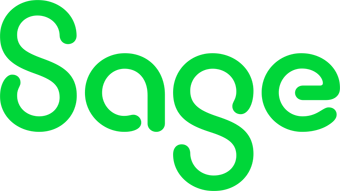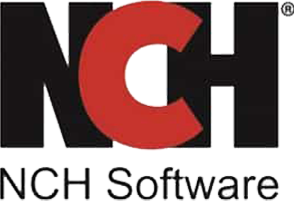The best bank reconciliation software should allow you to easily compare your bank statement with your bookkeeping records for the same time period and provide an accurate method for tracking cash flow. It should also enable you to reconcile bank accounts with or without a bank feed connection for maximum flexibility and show all outstanding transactions in the reconciliation report.
That said, here are our top six best bank account reconciliation software:
- QuickBooks Online: Best overall bank reconciliation software
- Xero: Best bank reconciliation software for scalability
- ReconArt: Best standalone solution with advanced reconciliation features
- Sage 50 Accounting: Best bank reconciliation software with automated workflows
- AccountEdge: Best value desktop reconciliation software
- NCH Express Accounts: Best free bank reconciliation software
Comparison of the Best Bank Account Reconciliation Software
QuickBooks Online: Best Overall Bank Reconciliation Software for Local Bookkeeping Support

Pros
- Offers manual or automatic bank reconciliations
- Has a vast network of QuickBooks ProAdvisors; easy to seek professional support if needed
- Lets you group payments into a single deposit
- Provides great UI for approving automatic matches and providing manual matches of bank to book transactions
Cons
- Is a bit more expensive than most similar software
- Has limited users with each plan
QuickBooks Online has four plans to choose from, all of which offer the bank reconciliation feature:
- Simple Start: $35 per month for one user
- Essentials: $65 per month for up to three users
- Plus: $99 per month for up to five users
- Advanced: $235 per month for up to 25 users
You can try QuickBooks Online for 30 days or get 50% off for three months if you sign up right away.
We selected QuickBooks Online as the overall best bank reconciliation software because of its simple and intuitive interface and excellent banking capabilities. For instance, you can reconcile bank accounts with or without bank feeds, giving you added flexibility in managing your bank transactions.
Additionally, it provides automated transaction matching and allows you to group payments into a single deposit, making it easy to reconcile your bank accounts. These features earned QuickBooks Online a perfect score of 5 out of 5 for banking in our case study evaluation.
We particularly recommend it for businesses that often need professional bookkeeping support due to its vast network of QuickBooks ProAdvisors. QuickBooks Online is extremely popular in the US, and many bookkeepers are familiar with the program. This means it’s easy to find a qualified professional to assist with your bookkeeping needs. If you need one, our guide on how to find a QuickBooks ProAdvisor can help.
QuickBooks Online is our best overall bank reconciliation software even if it has the same overall score as Xero. If you look at the breakdown of scores, it has a higher score in bank reconciliation features than Xero and features automatic matching of bank feed transactions with manually entered transactions.
QuickBooks Online is more suitable for small businesses given its ease of use and access to independent bookkeepers who are knowledgeable of the software. However, it took a hit in our evaluation for pricing as it’s a bit more expensive than most similar software.
We also couldn’t award more points for customer support because you need the highest plan, Advanced, to be able to contact phone support directly. With the lower plans, you have to send a ticket and wait for a callback. If customer support is important to you, consider AccountEdge, a desktop option that provides phone support in all plans for only an additional $10 monthly.
Xero: Best Bank Reconciliation Software for Scalability

Pros
- Includes unlimited users for all plans; ideal for scaling businesses
- Features a side-by-side layout for reconciling transactions allows for easier matching
- Provides automatic matching features
- Has an easy-to-understand reconciliation interface
- Offers bank statement extractions via Hubdoc
Cons
- Can’t combine multiple checks into a single deposit entry
- Limits tracking categories
- Limits five bills and 20 invoices in the lowest plan
- Requires live bank feed or statement upload to reconcile (no manual reconciliations)
All plans include unlimited users:
- Early: $20 per month for up to 20 invoices and five bills
- Growing: $47 per month for unlimited invoices and bills
- Established: $80 per month includes project tracking and multiple currencies
A 30-day free trial is available.
We selected Xero as the best bank reconciliation software for scalability due to its unlimited user access and features like bulk reconciliation of transactions, which are available with the Growing and Established plans. More recent updates include smarter matching algorithms, which are powered by AI.
Another thing we like about Xero is its intuitive reconciliation screen. It presents book and bank items side-by-side, which helps you easily match transactions and find items that haven’t been recorded without looking at different windows. Additionally, Wells Fargo and Chase clients can also use its data extraction feature using Hubdoc, which can extract data from PDF bank statements. You can also opt to be alerted if there are any unreconciled transactions in your account.
However, Xero doesn’t allow you to merge multiple checks into a single deposit, which makes it challenging to match individual entries with the single deposit on your bank statement. It also doesn’t allow you to manually reconcile your books to a paper statement—you must import your bank transactions in order to do a reconciliation. If these features are crucial to you, QuickBooks Online is a great option.
Xero’s score for bank reconciliation is a bit behind QuickBooks Online because it doesn’t allow you to group payments into a single deposit. However, it did well in ease of use due to its intuitive reconciliation screen and stood out above the rest in pricing because it allows you to add as many users as needed without paying any additional fees.
However, it scored poorly for customer service because it doesn’t offer live support options, like phone support and live chat. You can only seek support through email, chatbot, and online resources like setup guides. If you value live support, look into QuickBooks Online or AccountEdge.
ReconArt: Best Standalone Solution With Advanced Reconciliation Features

Pros
Cons
- Doesn’t disclose pricing
- Is not intuitive for end users without accounting experience
- Has limited customer support
ReconArt’s pricing page shows that there are five editions (Essentials, Certify, Plus, Close, and Enterprise). However, prices are undisclosed, so you will need to contact the provider directly to request pricing information or a customized quote.
ReconArt is next-level reconciliation software compared with our other picks—as its price reflects. The software is especially ideal for NetSuite users because it provides a comprehensive solution for larger small businesses.
We recommend it for SMBs with a large volume of transactions given its ability to support all reconciliation types. These include bank accounts, credit cards, A/R, A/P, balance sheet, and GL/suspense accounts. Also, its powerful automation capabilities let you set up approval workflows to ensure that journal entries posted to the GL are correct.
Meanwhile, a huge drawback to using ReconArt is that it isn’t easy to use, especially for non-accounting users. If you manage your own books, you may prefer a simpler and more intuitive software like QuickBooks Online or Xero. However, if you are working with an experienced bookkeeper, then they may be able to easily work with ReconArt.
Of all the software on our list, only ReconArt is a dedicated and standalone bank reconciliation software with impressive features. It nearly aced our evaluation of bank reconciliation features because it is primarily bank reconciliation software. Besides that, it can reconcile A/R and A/P.
However, it received a low rating in ease of use because of its outdated user interface and complex feature set. If you want a simpler option for reconciling your bank accounts, check out QuickBooks Online or Xero.
Additionally, ReconArt scored poorly in pricing because prices aren’t publicly disclosed, and we docked points for customer service because it doesn’t offer live support options. Your only options for support are contacting ReconArt via email and browsing self-help guides.
Sage 50 Accounting: Best Bank Reconciliation Software With Automated Workflows

Pros
- Provides automated workflows for processing transactions
- Is easy to set up and use
- Offers live support options
- Has department, cost code, and project tracking
- Backs up accounting data online through Microsoft 365 integration
Cons
- Won’t let you view outstanding transactions after reconciling
- Requires an additional fee to use multiple currencies
- Has only has one bank feed connection in the starter plan
You can choose from three Sage 50 Accounting subscription options:
- Pro Accounting: $60.08 per month; one user only
- Premium Accounting: From $103.92 per month for one user to $293.17 per month for five users; up to five users only
- Quantum Accounting: From $177.17 per month for one user to $452.67 per month for 10 users; custom priced for over 10 users
If you need payroll, then you can purchase a bundled service with prices starting at $768.75 per year for one to 10 employees.
We selected Sage 50 Accounting for its automated workflows. It has strong AI capabilities, which will learn from how you categorize transactions so that they will be categorized properly in the future. You can also automate workflows and set bank rules that will automatically be applied to your transactions. The platform’s audit trail features are also helpful in case of an audit.
Sage 50 Accounting also does a great job at showing the balances for outstanding checks and deposits in transit. However, just like Xero, you can’t combine multiple checks into a single deposit, making it difficult to match individual entries in the check register to the deposit on your bank statement. If you require this feature, then QuickBooks Online is a great alternative.
Sage 50 Accounting did well in terms of reconciliation features with only a few limitations, such as the lack of automatic matching features and detailed reconciliation reports. However, it didn’t meet our expectations across the other categories. For instance, it scored poorly for pricing because it’s the most expensive software on this list, starting at $60.08 per month for one user. It also took a hit for ease of use, as it’s a very complicated software that is difficult to learn.
Additionally, we couldn’t award more points in customer support because you can’t contact help over the phone. If you need support, you can rely only on email, live chat, and online resources.
AccountEdge: Best Value Desktop Bank Reconciliation Software

Pros
- Is more affordable than most desktop software
- Is locally installed; doesn’t rely on internet
- Can reconcile bank accounts with or without bank feeds
- Has a centralized bank register for easily managing bank transactions
Cons
- Requires an additional fee for bank feed
- Won’t let you pause reconciliation and resume later
- Has an outdated UI
You can choose from three AccountEdge versions:
- AccountEdge Pro: $20 per month; one user only
- AccountEdge Network Edition: $30 per month for two users
- AccountEdge Hosted: $50 per month per user; can add as many users as needed
Add-ons:
- Bank feeds: $5 monthly
- Telephone support: $10 monthly
- Payroll: $20 monthly for unlimited employees
- Workstation licenses: $10 monthly
- Credit Card Processing: From 1.79% per transaction
You may sign up for a 30-day free trial with no credit card required.
AccountEdge is more affordable than many desktop accounting software, making it ideal for small businesses on a budget. It costs as low as $20 monthly for one user, and when you add $5 a month, you’ll be able to connect your bank accounts and reconcile transactions from bank feeds. If you prefer not to connect your banks, then you have the option to manually upload your transactions.
What’s great about AccountEdge as desktop software is that you don’t need an internet connection to reconcile bank accounts. This means it’s a good option if you often work on your local computer at the office or collaborate with a bookkeeper on-site.
Despite its low cost, AccountEdge has decent bank reconciliation features. You can input the ending balance from your bank statement, view outstanding checks and deposits, and generate reconciliation reports all without the need to connect to your bank or upload your bank transactions. However, when reconciling accounts, you can’t pause the reconciliation and return to it later without losing your work. This is something you can easily do with cloud-based software like QuickBooks Online and Xero.
AccountEdge took a hit in our rubric for bank reconciliation because of the lack of automatic matching and variance analysis features. We also couldn’t award it more points in ease of use due to its outdated user interface, which is common in desktop accounting software. We also wish that the reconciliation screen was more streamlined and the reconciliation reports were easier to read.
While AccountEdge is affordable, we docked a few points because it’s limited to only two users. If you require three or more users, then you have to purchase the hosted version, which costs $50 monthly for each user. This is why we strongly recommend it for small businesses, especially those with only two users. Furthermore, it fell short in customer service because you have to pay an additional fee to access phone support.
NCH Express Accounts Software: Best Free Bank Reconciliation Software for Manual Transaction Import

Pros
- Is free forever for companies with fewer than five employees
- Can perform basic accounting tasks
- Offers a one-time purchase fee for larger companies
- Comes with optional add-ons for inventory and other functions
- Has an intuitive dashboard that allows for easy navigation
Cons
- Lacks a live bank feed; bank transactions must be uploaded from a statement
- Has no mobile app
- Is unable to capture and store receipt images
- Is unable to capture and store receipt images
- Has very limited customer support
- Lacks automatic matching; imported bank transactions must be manually matched to book transactions
NCH Express Accounts Software offers a free desktop program for small businesses with fewer than five employees (not users). Software licenses can also be purchased for a one-time fee directly through the NCH Software online store:
- Express Accounts Basic: $159 for the standard edition
- Express Accounts Plus: $249 for a fully featured, single-installation license
- Express Accounts Plus Quarterly Plan: $7.16 per month for unlimited ongoing use of all professional version features and all upgrades, billed at $23.16 quarterly
If you manage a few bank transactions and don’t require bank connections, you may find NCH Express Accounts Software sufficient. Its free version allows you to manually upload transactions from a CSV file. It also has a capable bank reconciliation module that’s good for manual reconciliation, which you can use even in the free version of the desktop software.
For larger businesses managing a high volume of transactions, it may be best to consider more full-featured software that allows you to connect your bank accounts. For this, we recommend QuickBooks Online or Xero.
NCH Express Accounts scored above average in bank reconciliation since it can do all the basic reconciliation functions as a free desktop option. However, its score took a hit because it doesn’t allow bank feed imports and automatic matching. There’s no option to connect a bank account to NCH Express Accounts, and users have to manually match all transactions to a paper statement. If these features are essential to your business, we recommend QuickBooks Online.
Moreover, CH Express Accounts’ UI isn’t as attractive as those of the other platforms listed in our guide. The interface design is traditional and some users—especially those with less than perfect eyesight or little accounting knowledge—may find it too difficult to use. This is why its ease of use score is only above average. If you want software with an easy-to-understand interface, we recommend Xero because it presents reconciling items in a side-by-side presentation.
Furthermore, NCH Express Accounts received a very low score for customer service due to its limited support options. It only provides email support and self-help resources for users.
How I Evaluated Bank Reconciliation Software
I determined and evaluated the best bank account reconciliation software using the scoring rubric below.
10% of Overall Score
We considered the price in three levels: for one user, three users, and five users. As the number of users increases, we’d want to see a more affordable per-user rate if compared to a single user. Besides that, we also awarded points for free trials, monthly plans, and discounts for new customers.
40% of Overall Score
As the meat of our evaluation, bank reconciliation gets the highest weight in the overall score. The major features that we’re looking for are the ability to import bank transactions through feed, upload bank statements, and reconcile manually. The software should also show the outstanding checks and deposits in transit for tracking outstanding transactions. Besides that, the reconciliation report should show the details about why the book and bank balances differed during the reconciliation period.
20% of Overall Score
We looked at user review websites to gauge actual feedback from users. Our score is derived from the average user review ratings from these review websites.
20% of Overall Score
Our ease of use evaluation focused on the overall user experience in performing bank reconciliations. We subjectively rated the overall look of the reconciliation screen, the layout and presentation of the reconciliation report, and difficulty of using the bank reconciliation module.
10% of Overall Score
We considered customer support for customers who might need technical support in using the software. Customers must have access to different support channels for maximum flexibility. In our scoring, providers with multiple support channels receive more points.
3 Ways Accounting Software Perform Bank Reconciliations
There are three basic ways that accounting software can perform bank reconciliations. I recommend that you decide which method you prefer and then choose a software that allows for it. The three methods form a spectrum of functionality, and I’ve listed them, starting with the simplest but least useful.
1. Matching the Book Balance to the Bank Balance
Many free or inexpensive software don’t actually perform what accountants consider to be a true bank reconciliation. While they label the feature as a reconciliation, they don’t allow for any timing differences—i.e., reconciling items—between the books and the bank.
These software only match the balance per the books to the balance per the bank. The accounts must match perfectly for you to finalize the reconciliation, so if you have a paper check deducted on your books that hasn’t cleared the bank, you won’t be able to finalize your reconciliation. You’ll be forced to delete or change the date of the check on your books—both of which will make your books incorrect.
While excluded from this guide, popular software with this very limited bank reconciliation feature include Wave, FreshBooks, and the free version of ZipBooks.
2. Manual Bank Reconciliation
Prior to the internet, the vast majority of accounting software allowed you to reconcile the bank account per your books to a paper bank statement. Essentially, you manually enter your bank statement balance and then mark transactions in your books that appear on the bank statement. Once reconciled, a report will show all the transactions that have cleared the bank and all the transactions that are reconciling items between the bank statement and the book balance.
Paper reconciliations are great, and many accountants at small businesses still prefer them because they avoid the need to connect your bank accounts to your accounting software. They’re simple to perform, but if you have hundreds of transactions per month, then you’ll want an automated reconciliation. Software in this guide that allow reconciling to a paper statement include QuickBooks, NCH Express Accounts, Sage 50, and AccountEdge. Xero and ReconArt do not allow manual bank reconciliations.
3. Automated Bank Reconciliation
Advanced software like QuickBooks Online automates most of the reconciliation process. The underlying process is the same as reconciling to a paper statement, but the software imports the bank transactions and then automatically compares them to the book transactions. Most software attempt to automatically match bank transactions to book transactions.
During the reconciliation—instead of matching to a paper statement—you’ll confirm the matches between bank and book transactions that the system made and manually match any remaining transactions. A book transaction is considered to have cleared the bank once it is matched to a bank transaction—the equivalent of placing a mark next to it in a manual reconciliation.
Automated bank reconciliations require either a live bank feed or uploading your monthly bank statements. It can be a bit difficult to learn for non-accountants, but automated reconciliations can save a lot of time when dealing with hundreds or thousands of transactions. All of the software on this list import bank transactions to automate the bank reconciliation, but NCH Express doesn’t offer suggestions for likely matches between bank and book transactions.
Frequently Asked Questions (FAQs)
Some important features to look for include automatic transaction matching, the ability to import bank statements, user-defined rules for matching transactions, and the ability to generate reports and export data.
Bank account reconciliation software can save your business time and reduce errors by automating the process of reconciling bank statements with internal accounting records. It can also help identify and correct errors more quickly and provide an accurate picture of your company’s financial health.
Bank reconciliation software typically connects to a company’s bank accounts and imports transactions into the software. It then matches these transactions with the company’s internal accounting records, such as invoices and receipts, to identify any discrepancies. It can also typically flag transactions that need further investigation or review.
Bottom Line
We chose QuickBooks Online as the best bank account reconciliation software, while Xero is an excellent scalable solution. If you’re looking for accounting software with automated workflows, Sage 50 Accounting is a good choice, whereas ReconArt is ideal for businesses with many transactions. NCH Express Accounting is sufficient if you don’t need bank connections, and AccountEdge is an affordable option for desktop-based bank reconciliation.



